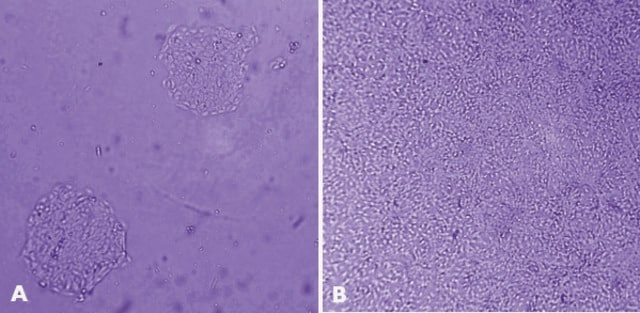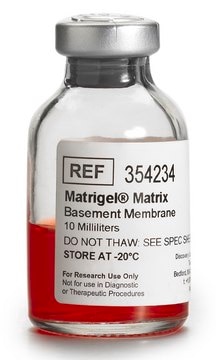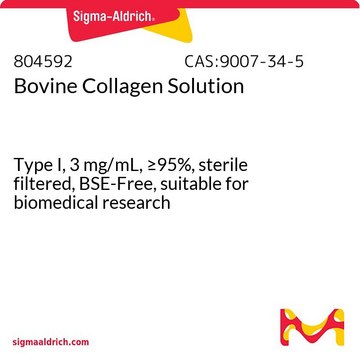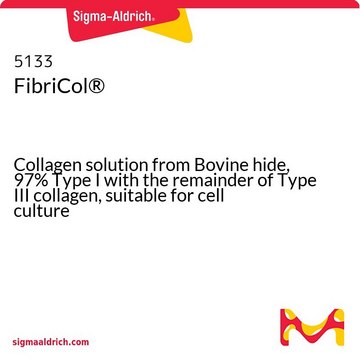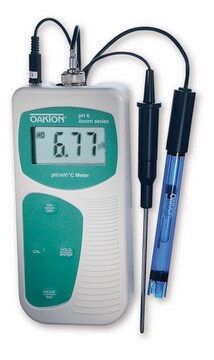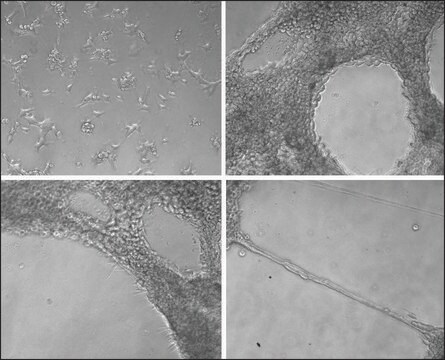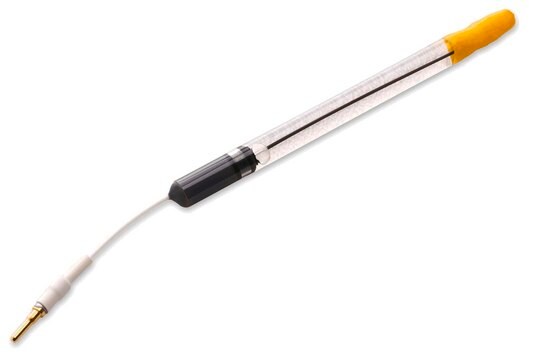5074
Bovine Collagen Type I
from bovine skin, liquid, 5 mg/mL, suitable for cell culture, used for 3D Hydrogel formation, PureCol™ EZ Gel
Synonym(s):
Collagen type
About This Item
Recommended Products
product name
PureCol™ EZ Gel solution,
biological source
bovine skin
Quality Level
sterility
sterile
Assay
≥99% (SDS-PAGE Electrophoresis – Silver Stain, SDS-PAGE)
form
solid
packaging
pkg of 35 mL
technique(s)
cell culture | mammalian: suitable
shipped in
wet ice
storage temp.
2-8°C
General description
Application
- for coating culture plates to facilitate the seeding and growth of epithelial cells derived from human nasal epithelial tissue
- as a component in the bioartificial tendon preparation, providing a gel matrix for seeding human tendon cells and promoting their growth and collagen gel formation
- for embedding mouse Achilles tendon-derived cells in 3D-collagen constructs, providing a biomimetic environment for studying tendon biology and performing qPCR, immunohistochemical, and western blot analyses.
Features and Benefits
Preparation Note
1. Remove PureCol EZ Gel from 2-10°C storage. To prevent gelation, maintain temperature of product at 2-10°C.
2. Introduce PureCol EZ Gel into cell culture system. Cells can be added to the PureCol EZ Gel solution.
3. To form gel, warm to 37°C. The beginning of gelation will occur within 40 minutes, but allow approximately 90 to minutes for firm gel formation.
Legal Information
Storage Class Code
13 - Non Combustible Solids
WGK
WGK 1
Flash Point(F)
Not applicable
Flash Point(C)
Not applicable
Certificates of Analysis (COA)
Search for Certificates of Analysis (COA) by entering the products Lot/Batch Number. Lot and Batch Numbers can be found on a product’s label following the words ‘Lot’ or ‘Batch’.
Already Own This Product?
Find documentation for the products that you have recently purchased in the Document Library.
Customers Also Viewed
Articles
Hydrogela are the most widely used systems for 3D cell culture. Learn more about this technology (what are hydrogels? How to chose?)
Our team of scientists has experience in all areas of research including Life Science, Material Science, Chemical Synthesis, Chromatography, Analytical and many others.
Contact Technical Service
